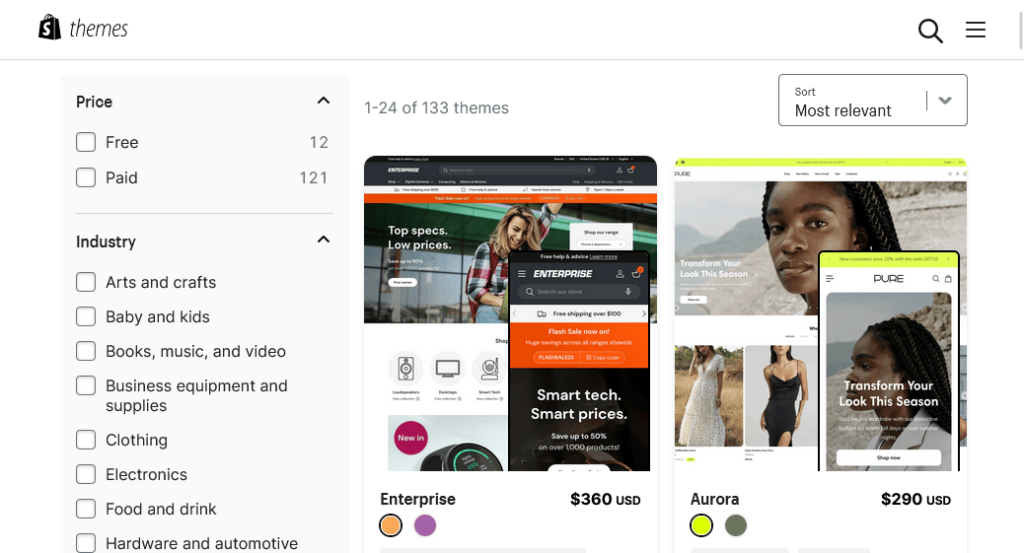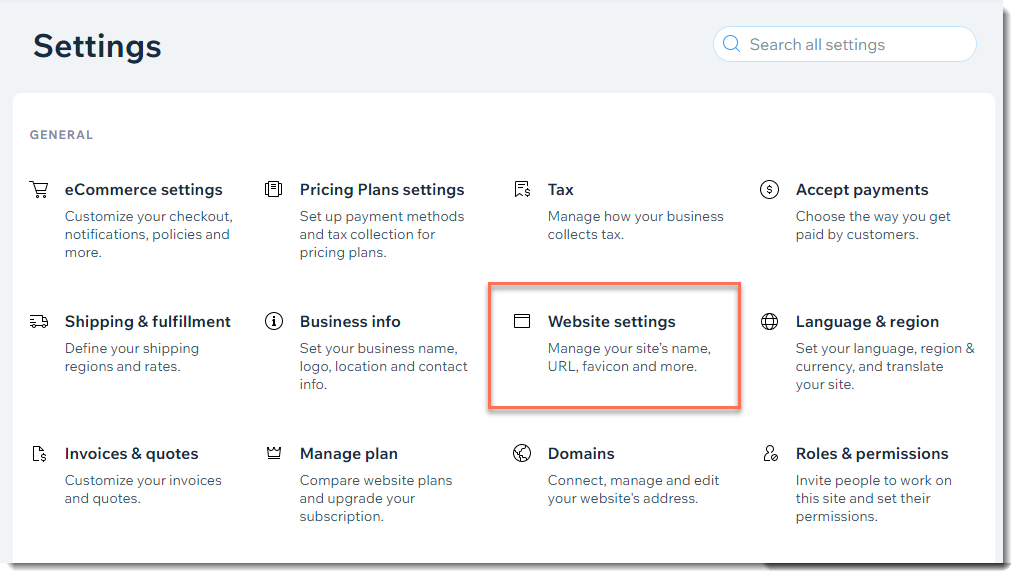When you own an online store, you have the freedom to set your hours and create your products. Besides, you can help people around the world by sharing your products with them. But starting an online store comes with challenges, especially if you have no prior experience. This is the reason why approximately 25% of newly established businesses shut down within their initial year, and by the fifth year, the rate of business failures escalates to 56.8%.
To guide the development path for your store, we have put Shopify tips new store owners need to know in 2024:
1. Create a Brand identity

Clothy is known a fashion company that creates unique styles for people.
When starting a new Shopify store, there are probably a thousand businesses offering similar products and services. An attractive brand identity helps you stand out.
Brand identity comprises various elements that collectively contribute to how a brand is perceived. Your branding should reflect your values, mission, and the essence of your products. These elements work together to create a cohesive and recognizable brand identity that sets the brand apart in the market. Consistency across these elements is key to building brand trust and loyalty.
A strong and consistent brand sets the foundation for long-term success.
2. Use High-quality Visuals

Using high-quality visuals on your Shopify store is crucial for creating a positive and professional impression, as well as enticing potential customers to explore your products. The performance of your store can be significantly impacted by the quality of your product or video images. This is due to several important reasons.
Shopping online is a difficult challenge for customers who can’t physically inspect products before purchasing. Evaluating quality becomes tricky for customers because some customers think that the expensive price doesn’t mean a product of better quality.
The product image is often the first thing potential customers see. A high-quality and visually appealing image creates a positive first impression, capturing the attention of visitors to purchase your product. So, invest in professional product photography with the proper angles and lighting setup for capturing quality shots.
3. Select the appropriate Shopify theme

Selecting the appropriate Shopify theme can be challenging because there isn’t a specific wrong choice. You can construct a store using any theme, but the optimal selection should meet the following criteria:
- Aligns with the envisioned brand.
- User-friendly navigation.
- Incorporates visual storytelling elements.
- Provides necessary e-commerce features.
The Shopify theme store provides 150 options made up of paid and free themes under multiple categories. Indeed, paid packages are not necessarily the best way to apply Shopify themes. However, you will find many better quality themes using paid options but paid themes do not always make a good store. The best choice is the one that meets your budget and brand. So, you need to find an appropriate theme that fits all the criteria.
4. Use Whole Numbers in Pricing

A common pricing practice in the e-commerce industry is ending product prices with 99 cents. This is because many business owners believe it gives the illusion of affordability.
An alternative strategy: use whole numbers. Some customers want to buy high-quality items at fair prices. Adding 99 cents to your product prices may discourage this customer. Moreover, for newcomers to Shopify, this employing method could affect the authenticity of your business.
So, consider rounding up to the nearest whole number. For example, instead of $10.99, use $11. This straightforward pricing approach not only simplifies your pricing structure but also contributes to a more straightforward and trustworthy shopping experience for your customers
5. Display Your Store Policy

When prospective customers explore your Shopify store for the first time, one key aspect they seek is information about your store policies. Most customers are interested in understanding these policies, particularly those related to returns and exchanges before choosing to make a purchase.
Positioning your store policies prominently, such as in the website footer, enhances trust and increases sales. Especially, you don’t need to create these policies by yourself.
Shopify offers a policy template that you can access via your admin dashboard. Just make the necessary adjustments and ensure you don’t overlook essential details.
6. Up Your Email Marketing Approach

Over the years, email marketing has become one of the most effective forms of marketing. According to Statista, e-mail marketing generated over 10 billion US dollars in revenue in 2023.
Moreover, the population of email users has consistently increased over the years, turning it into an attraction for potential customers. However, to achieve the best result, it’s essential to employ the correct approach.
Your email marketing isn’t just mere sales pitches. Create captivating emails that begin with compelling subject lines. Share narratives, insider tips, and exclusive offers. Besides, you can send reasonable subject lines for review requests to attract customers and return lazy emails
Set up an email sequence designed to nurture leads, and transform them into loyal customers. Employ welcome series, abandoned cart emails, exit-intent popups, and personalized recommendations to sustain a meaningful connection.
7. Promote Your Store on Social Media

As a new owner, your desire to generate immediate sales might prompt you to consider launching paid advertising as your initial strategy. However, in practice, paid ads typically yield limited effectiveness for businesses in their early stages. This is because your brand is unknown to many customers, so potential buyers haven’t a compelling reason to place trust in your products or services.
To avoid resource wastage, it’s advisable to market your website through social media. Harness the potential of social media to create excitement about your business and foster a connection with potential customers.
Create accounts across various platforms like Pinterest, Instagram, Facebook, and TikTok. Regularly share content, encompassing images, stories, and videos, on each platform. Besides, incorporate hashtags and trending sounds to attract attention.
Ensure that the content you post is yours, or if not, provide proper attribution to the source. Moreover, make certain to post content that aligns with the interests of your target audience. Reposting content from influencers in your industry or leaving comments in their comment sections is another effective strategy.
By implementing this strategy, you can effectively promote your Shopify store on social media, increase brand awareness, and drive traffic to your e-commerce platform before running paid ads
WRAP UP
When it comes to online shops, Shopify is a popular pick for store owners. It gives you lots of useful stuff to set up and run your store smoothly. But if you’re new, all the choices might be too much. Remember our advice to make the most of your Shopify store. These tips will help you kick off well and start making sales.
